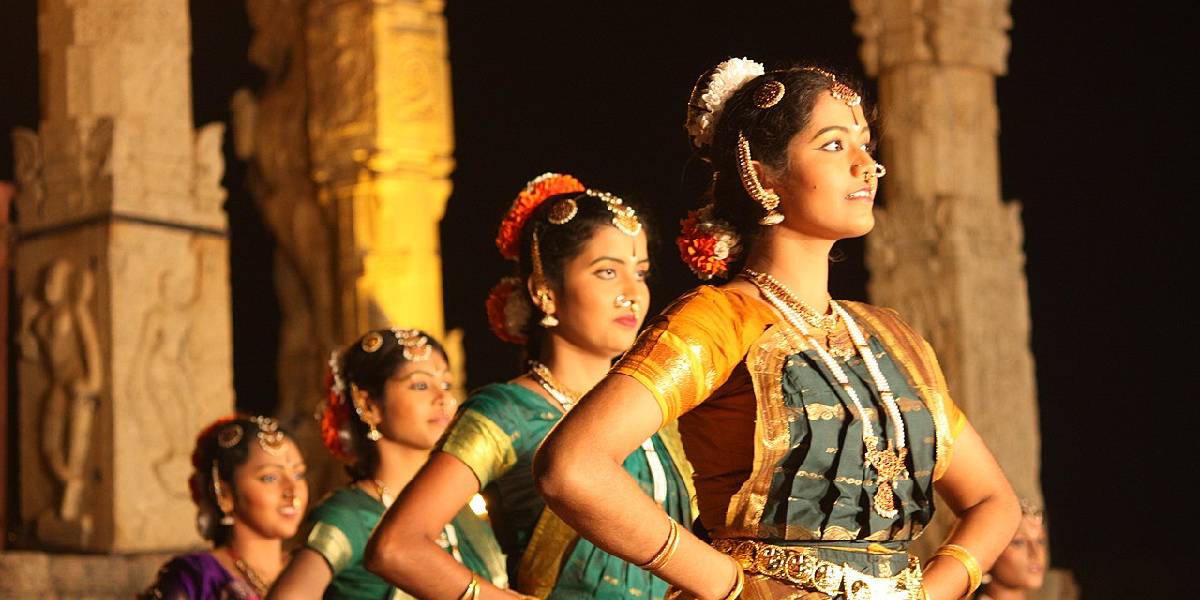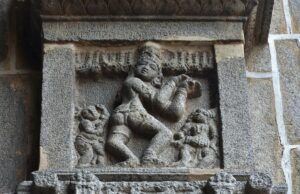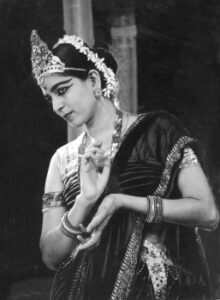Bharatanatyam has undergone significant evolution, with modern interpretations, different themes, and global influences shaping the form.
Published Sep 21, 2024 | 4:00 PM ⚊ Updated Sep 21, 2024 | 4:00 PM

The advent of social media has brought Bharatanatyam unprecedented exposure, creating new avenues for dancers to share their craft.
The sages were confident that their command over the mantras would help them control the gods. Lord Shiva, determined to teach the sages of Thillai vanam (mangrove forest) a lesson, assumed the form of Bhikshatana Moorthy and visited the sages.
His consort Mohini, the female avatar of Lord Vishnu, accompanied him. The beauty of the pair enamoured the sages and their wives. However, the sages were enraged at seeing their wives enchanted. They resorted to mantras to destroy the mendicant seeking alms.
They created nagas — serpents — which Shiva wore around his neck. Then came the ferocious tiger. Shiva wore its pelt around his waist. The elephant the sages created was killed, as depicted in Gajasurasamhara.
With their efforts to destroy the mendicant in vain, the sages used all their strengths to create Muyalakan (Apasmara), a demented dwarf, an embodiment of arrogance and spiritual ignorance. Shiva smiled, stepped on his back, and performed Ananda Thandavam — the dance of eternal bliss.
The Thillai Nataraja Temple in Chidambaram, some 215 km from Tamil Nadu’s capital Chennai, now stands tall even as the old meets the new in the town. The carvings at the temple depict the 108 karanas (Sanskrit for “doing”), the key classical dance transitions mentioned in Thandava Lakshana of Natya Shastra by Sage Bharata.

Thillai Nataraja Temple, Chidambaram. (Wikimedia Commons)
These karanas form the basis of Bharatanatya, considered to be a portmanteau of Bhaavam (expression), Raagam (melody), and Natyam (dance).
The ancient town of Chidambaram has long been intertwined with the art of Bharatanatyam. For classical dancers, the temple dedicated to Lord Nataraja, the cosmic dancer, holds immense significance.
More than a place of worship, the temple is a spiritual stage where art and devotion merge. How has this connection evolved, and does Bharatanatyam retain its sacred ties to Chidambaram as it once did?
The Thillai Nataraja Temple is a celebrated hub for Bharatanatyam, where many dancers believe they are not simply performing but offering their art as a divine expression to the deity. Festivals like the Natyanjali (a portmanteau of Natyam and Anjali — offerings), celebrated annually on the eve of Maha Shivaratri, bring dancers from across the world to the temple to present their art before the Lord.
Temple priests noted that this practice dates back to centuries when temple dancers, or devadasis (maids of gods), were integral to religious rituals.
“The movements of Bharatanatyam mirror the cosmic dance of Nataraja, and in this sacred space, it feels as though the art form fulfills its highest purpose,” a priest succinctly put it.
Historically, the devadasis would dedicate their lives to serving the temple through dance, blurring the lines between performance and devotion. Today, Bharatanatyam has expanded beyond temple walls, gracing global stages.
But dancers like Devika, a Chennai-based performer, return to Chidambaram for special performances, emphasising, “There is an energy here that no other stage can replicate. It’s like stepping back into a time when dance was worship, not just art.”
Over the years, Bharatanatyam has undergone significant evolution, with modern interpretations, different themes, and global influences shaping the form.

A carving depicting a dance ‘mudra’ at the Nataraja Temple in Chidambaram. (Wikimedia Commons)
While its spiritual roots remain in the temple setting, dancers now explore contemporary issues, social themes, and new forms of storytelling.
Local historians in Chidambaram, however, noted that while the technical aspects of Bharatanatyam have grown, its devotional core is sometimes diluted. “The dance has become more about form and technique. The sense of surrender and offering to Nataraja that was once central, is often secondary now,” observed Lakshmi, a historian who has studied the temple’s cultural legacy.
Kanaka, a dancer said, she has been witnessing a significant evolution in the dance form over the past 17 years. “While the techniques have become more accessible, what concerns me is how many students today focus solely on obtaining certifications,” she lamented.
“They often overlook the theory and deeper essence of the art. Dance is not just about movements, it is about understanding its roots, its history, and the emotions behind every step.”
Yet, some modern dancers see this “evolution” as an expansion, not dilution. “We are carrying the spirit of devotion to different spaces,” Bengaluru-based dancer Ananya said. “While the temple will always remain sacred, Bharatanatyam can also be an expression of social commentary. The devotion needs not to be to a deity but to society and humanity.”
Despite these shifts, Chidambaram remains a bastion for traditional forms of Bharatanatyam. During temple festivals, dancers perform during the Abhishekam and Aarati, rekindling the age-old connection between ritual and performance.
For devotees, watching these performances is a deeply spiritual experience, with many expressing that the dance enhances their connection with the divine. “Bharatanatyam here is not just entertainment. It’s prayer in motion,” Meenakshi, a devotee, said.
Temple rituals, such as the daily worship of Lord Nataraja, often incorporate music and movement reminiscent of Bharatanatyam’s rhythms, symbolising the inseparable link between art and faith. Devotees believe that the temple’s structure itself resonates with the vibrations of the dance, making it an essential part of the spiritual atmosphere.
As Bharatanatyam continues to evolve, Chidambaram holds on to its role as a spiritual anchor for the art form. The town’s connection with the dance remains deeply rooted in history, devotion, and culture.

Rukmani Devi Arundale presenting a Bharatanatyam recital on 6 October 1940. (Wikimedia Commons)
Yet, the question lingers — will the next generation of dancers continue to uphold this sacred bond, or will Bharatanatyam’s focus shift further away from its devotional roots?
Dancers presented mixed views. Some viewed the temple as a symbolic starting point, while others felt that the true essence of the dance could be felt even outside Chidambaram. However, the temple’s significance as a cultural hub remains undisputed, drawing performers from all over the world who come to reconnect with the roots of their art.
“In Chidambaram, Bharatanatyam is not just performed in temples, it’s lived in the streets, the homes, and the hearts of its people. The challenge today is to keep this living tradition alive for future generations, without losing sight of its spiritual roots,” Thamarai, a dance teacher, said.
Bharatanatyam in Chidambaram is more than a tradition — it’s a living dialogue between art, devotion, and culture that continues to adapt with time while remaining true to its divine origins.
As Bharatanatyam grows in global popularity, its original ties to devotion, especially in places like the Chidambaram temple, are increasingly being questioned.
Once rooted in rituals, temple performances, and the sacred offering to deities, Bharatanatyam now regularly graces prestigious international stages and digital platforms. The rise of global tours, commercial sponsorships, and performances in secular spaces has led some to wonder if the dance is drifting away from its devotional origins.
Priests at the Thillai Nataraja Temple said that while Bharatanatyam still holds a revered place within the temple, fewer dancers view it as a spiritual practice.
The advent of social media has brought Bharatanatyam unprecedented exposure, creating new avenues for dancers to share their craft.
Platforms like Instagram and YouTube have allowed performers to reach audiences far beyond temple walls, bringing traditional forms into modern homes.
However, with this visibility comes a trade-off. Some purists argue that the intricate spiritual narratives of Bharatanatyam are being condensed into short, visually appealing snippets, reducing its rich symbolism and devotional power.
Lalitha, a retired dance teacher, shared the same view. “On one hand, social media has democratised Bharatanatyam, giving a voice to dancers from all over the world, allowing them to break free from traditional gatekeepers. But on the other hand, the platform encourages short, edited snippets that might compromise the integrity of the dance.”
“Bharatanatyam is a slow, deliberate art form meant to unfold with grace over time. When it’s condensed into mere moments for social media, its depth, spirituality, and cultural significance can be diminished,” she opined.
(Edited by Majnu Babu).
